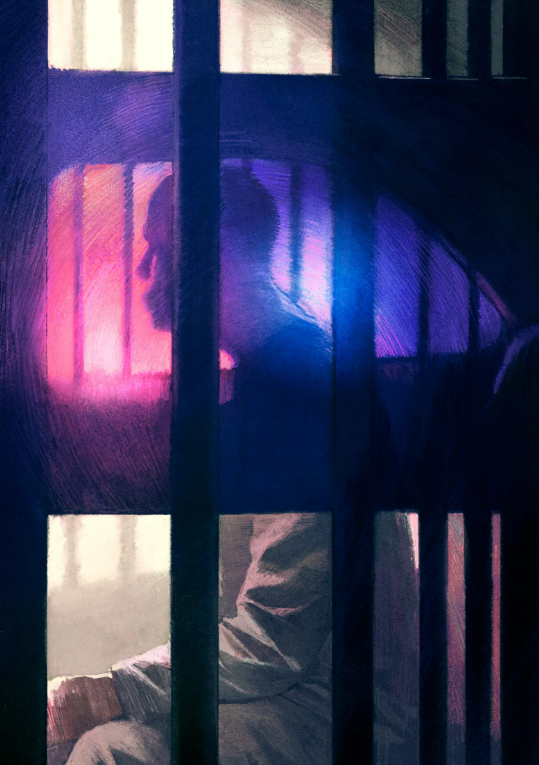Essay In New Yorker Magazine Spotlights Felony Murder
Felony murder doctrine has put thousands of Americans, disproportionately young and Black, in prison for crimes they did not commit nor intend to commit.

"Sentenced to Life for an Accident Miles Away," written by Sarah Stillman, was featured in The New Yorker magazine's December 18th, 2023 print edition. The piece follows the story of Sadik Baxter, who was sentenced in Florida to life in prison without the possibility of parole for an accidental death that he did not cause or intend to cause under the felony murder doctrine.
Baxter and O'brian Oakley were rummaging through unlocked parked cars in a Florida residential neighborhood looking for valuables. A nearby resident spotted Baxter entering his parked SUV and called 911. The police arrived within minutes and arrested Baxter. While Baxter was in handcuffs in the backseat of a police cruiser, the reporting resident noticed Oakley drive by and pointed him out to police. After a neighborhood high speed chase reaching 80 MPH, Oakley ran a red light, collided with another car, and crashed into two passing cyclists, killing them instantly.
The cyclists’ deaths were a senseless tragedy that nobody should have to endure. Though Mr. Baxter wasn’t responsible for that tragedy, as he had been sitting in police custody, handcuffed, miles away, for over ten minutes when the accident occurred, the State of Florida prosecuted him for first-degree murder under the felony murder doctrine.
The following contains excerpts of the New Yorker feature on Baxter and the felony murder doctrine.
*****
Remarkably, no one knows how many people in the United States have been imprisoned for the crime (of felony murder). So in 2022, working with students and colleagues at the Yale Investigative Reporting Lab, I decided to try to get a sense of the scale. We started by filing public-records requests to state corrections departments and other agencies across the country; to our surprise, most told us that they weren’t keeping track. “The records do not exist,” an official at the Virginia Department of Corrections wrote, in a typical response. In most states, a felony-murder conviction gets lumped in with other types of murder, clouding the data. It was as if the extent of felony murder in America were hidden by design.
When we eventually secured robust data from eleven states, our lab’s analysts discovered that racial disparities for felony-murder convictions were higher—sometimes far higher—than the already disproportionate rates of Black incarceration over all. In Wisconsin, where Black individuals account for less than seven per cent of the population, the data show that they make up seventy-six per cent of those incarcerated for felony murder. In St. Louis, every felony-murder conviction between 2010 and 2022—a total of forty-seven people, according to the State of Missouri—was of a Black person.
In the days after his arrest, Sadik Baxter figured he’d be released on bail in time for his daughter’s first day of kindergarten. He’d already bought Danasia’s uniform, a blue skirt and a bright-white shirt. But, shortly after he learned that he was facing life in prison, a nurse in the jail’s mental-health infirmary was wrapping him in a “turtle suit,” a heavy anti-suicide smock, and a doctor was prescribing a cocktail of drugs.
Once off suicide watch, Sadik remained in a spiritual hole. “I slept through breakfast, lunch, and dinner,” he told me. The depression lasted for most of his first year in jail, as he awaited trial. He had originally been appointed a lawyer who struck him as attentive and hardworking, but that attorney was soon replaced by another. The new guy, Sadik thought, treated him like a nuisance. To soothe his panic, he took to playing spades or dominoes with other men in the infirmary’s dayroom. One afternoon, an older man named Erik came in and asked for a word.
“Look, I can tell you’re fighting time, because I see you’ve got stripes,” Erik said. Indeed, in the jail, inmates’ color-coded outfits told a story, indicating the severity of charges. Men in black and white stripes—including Erik—were staring down violent charges that could carry a sentence of life. Sadik explained to Erik that he was facing first-degree felony-murder charges for killing two people he’d never encountered. “So why are you sitting around playing spades,” Erik asked, “when you need to focus on learning the law?”
The jail had a law library, and Erik taught Sadik how to file a request form that would grant him copies of a few cases at a time, precedents that might prove relevant to his defense. Early each morning, he’d head to Erik’s cell to read and annotate the cases, turning one of the cots into his desk. Some of his spades partners from the dayroom eventually joined him. “I’m all about freeing myself,” Erik told them, “and you should be, too.”
*****
You can read the rest of the piece, "Sentenced to Life for an Accident Miles Away" from The New Yorker. You can also read more about Baxter's case, Baxter vs. Florida Department of Corrections, and his legal fight for a fair sentence alongside his work with the MacArthur Justice Center.










